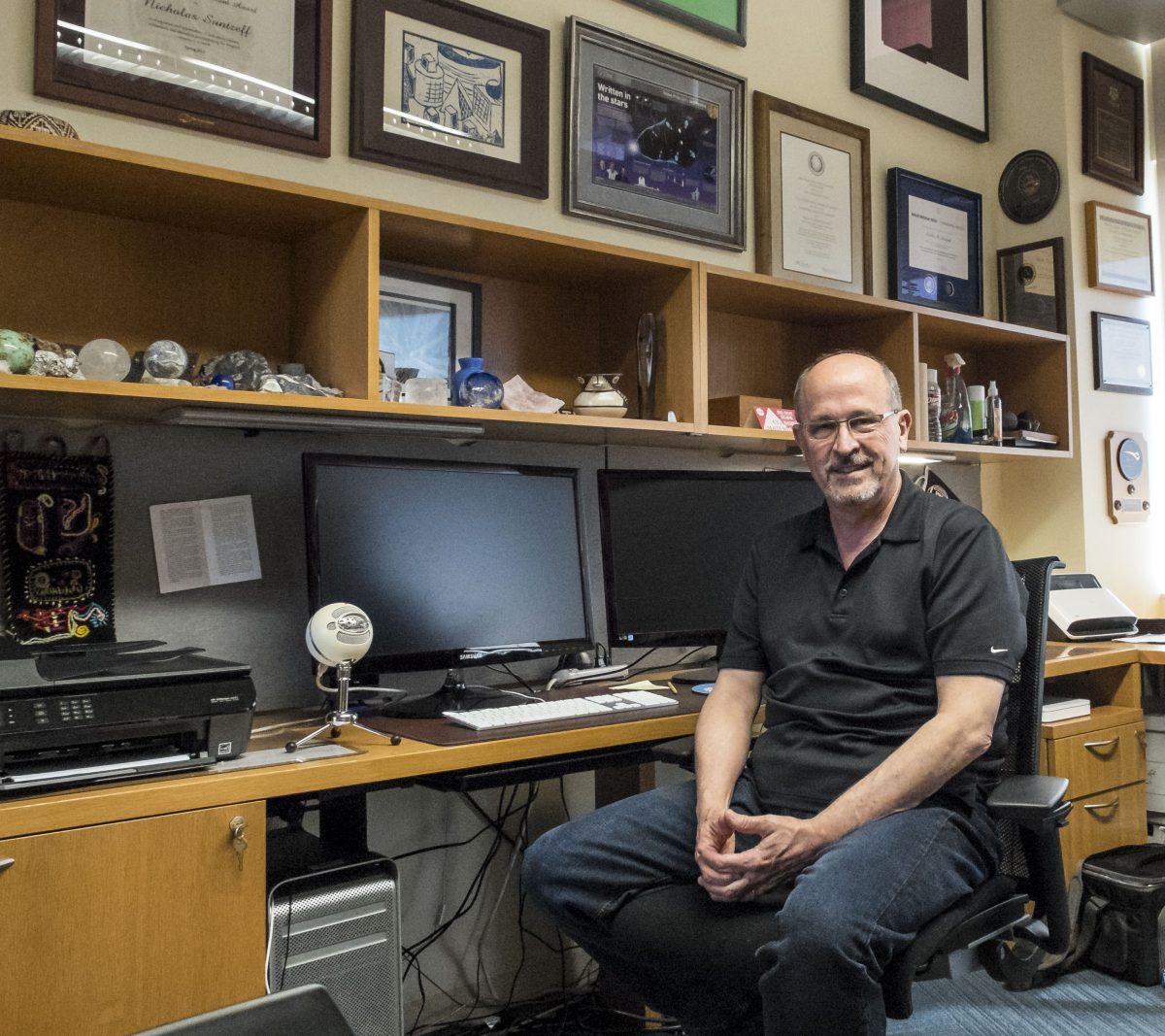Reporter Barath Menon sat down with Nicholas Suntzeff, Texas A&M astronomy professor, to talk about his time spent at some of the world’s largest observatories.
THE BATTALION: What would a typical day at an observatory be like?
SUNTZEFF: Okay, let’s do the one in Chile, because I’ve lived in Chile for 20 years. So I would go up at noon-time on a bus and they would carry us from our offices and homes near the Pacific Ocean and in the city of La Serena, and then an hour and half [later] you are at 8,000 feet in the middle of the mountain, Cerro Telolo, and you immediately feel the effect of the altitude. You were given a dorm room, a dining hall. You have lunch, put your stuff in the dorm room, then you walk to the top [of the mountain] which is about half a mile away, where the telescope is. In the afternoon, you get the instrument working, get calibration data, you try to play with the instrument to make sure it operates. It’s traditional that all astronomers gather before sunset, and we all watch the sunset together. And you can see 200 miles to the horizon, and you can see the rim of the Pacific Ocean, and you witness a phenomenon called the “Green Flash” that we all try to see. Actually, in such a remote location you can look up to the sky and actually see the Milky Way galaxy. Very few people have actually experienced what the night sky is like. You can’t experience it in Texas, and almost anywhere in the United States. You have to go to a place that is really remote.
BATTALION: What inspired you to pursue a career in astronomy?
SUNTZEFF: I really like mathematics, so that’s what I really studied in high school and college — my degree is in mathematics. But when I was graduating with my bachelor’s degree in mathematics, I realized that maybe this isn’t really what I want to do. It was at the time — this was in the 1970s — when computers were beginning to be very useful and people were pushing me into the computer industry, and I didn’t want to work in “industry.” So I had also taken all of the physics classes, and while I liked physics as the subject, I did not like the physicist that I worked with. I really did not like the culture they had, so I went to astronomy. It was sort of the other thing I could do. During my undergraduate at Stanford, my friend and I built the student observatory that’s still there and it was a four-year project and it really was a lot of fun. But I never did it because I liked astronomy — I did it because [it was] building an observatory from scratch, raising money, working with professors and so forth. So maybe because my friend, who was really interested in astronomy, helped me be interested in building the observatory and got me into astronomy. Now the Physics Department at Stanford, they gasped at astronomy. Literally, one of them said, “Astronomy is what failed physicists do. Get a Ph.D. in physics.”Now you can always go into astronomy after your Ph.D., but people from Stanford don’t go into astronomy, and that made me want to do it more. So I went to the Lick Observatory in University of California at Santa Cruz.
BATTALION: Is there any exciting news coming up for the Texas A&M
Astronomy Department?
SUNTZEFF: Well, there are a lot of things going on. We are a part of the Giant Magellan Telescope project. We are a part of one of the largest telescopes that will ever be built by the year 2020. We are also a part of the McDonald telescope in conjunction with the University of Texas at Austin. It is also one of the largest telescopes in the world. We are also part of the Hobby-Everly dark energy project, and it is expected to go online anytime now, which is exciting. We don’t have our own observatory — we have a campus observatory we use for training graduate students and for training classes, but we don’t have access to significant telescopes. We are part of the Dark Energy survey, and it is making a lot of discoveries, and A&M is playing a major part in them. And professors here are using the data to discover what are called “satellite galaxies” and “dwarf galaxies.” When I was a graduate student, there were only six of them. Now there are 19, and most of them are being discovered here at A&M.























